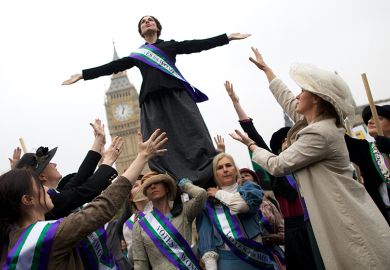We have nearly all heard of Asian writers such as Salman Rushdie, Vikram Seth, Anita Desai, Amitav Ghosh and now Arundhati Roy, but they all seem to have come from the subcontinent. We hardly ever come across high-profile British Asian authors writing from the perspective of growing up in this country.
When we do, the chances are that the book is published by a small company and has a modest print run. A good example is Telling it like it is: Young Asian Women Talk, edited by Nadya Kassam, a young community worker. It is not literature but the 22 contributors do offer insight into the preoccupations of young Asian women in Britain. The teenagers are able to put across their own view and not rely on others to do so.
Many of the stories deal with normal teenage angst: being allowed to go to a disco or the first date or the first kiss. But there is a unique Asian dimension to other tales, such as having to fight for the chance to receive an education, or the pressure to be a "good Muslim". There are also some candid personal accounts. Rahila Punjwani, in "Too precious to be put last", tells of being sexually assaulted at the age of 12 by the brother of a friend. In "Coming out", a 19-year-old Pakistani identified by only her first name, Leila, confides how she came to terms with being a lesbian. She is now hiding from her family, especially her uncles who want to "cure" her by marrying her to a Pakistani man.
Underlying all these stories is a central theme: the desire on the part of the young women, who were either born or brought up in Britain, to establish an identity. Quite what form this should take is something they are trying to evolve. Does it mean rebelling against parents, or being deceitful or "being open", as Salima Dhallia chooses to be in "Set yourself free"? - which happens to be my favourite piece because of its self-deprecating humour. This question of identity is less of a burden when the women acquire an understanding of their parents' roots, as Shabneet Chadha, a 16-year-old schoolgirl, concludes in "Is India ready for me?" The reader is left with the impression that the very act of confiding their hopes and deeper secrets to the page has helped these women work out their moral dilemmas.
The more striking pieces are those in which the personality of the writer emerges through the telling of the tale. An instance is Raj Kelair's "A letter to my brother". She argues that popular male opinion of Asian women as weak has helped her to emerge as strong and independent.
The contributors are named but, irritatingly, the reader wanting to relate background to story has to turn to the end of the book to discover the biographical details. Some of the women do show promise and, if nurtured, could contribute to creating a genre of British Asian writing. What is encouraging is the sense of optimism which emerges in all the stories. Telling it like it is will certainly be enjoyed by young people and prove an eye-opener for parents, teachers and anyone interested in what it means to be a British Asian.
Suman Bhuchar is a television producer and freelance journalist.
Telling It Like It Is: Young Asian Women Talk
Editor - Nadya Kassam
ISBN - 0 7043 4941 8
Publisher - The Women's Press
Price - £4.99
Pages - 131
Register to continue
Why register?
- Registration is free and only takes a moment
- Once registered, you can read 3 articles a month
- Sign up for our newsletter
Subscribe
Or subscribe for unlimited access to:
- Unlimited access to news, views, insights & reviews
- Digital editions
- Digital access to THE’s university and college rankings analysis
Already registered or a current subscriber?



